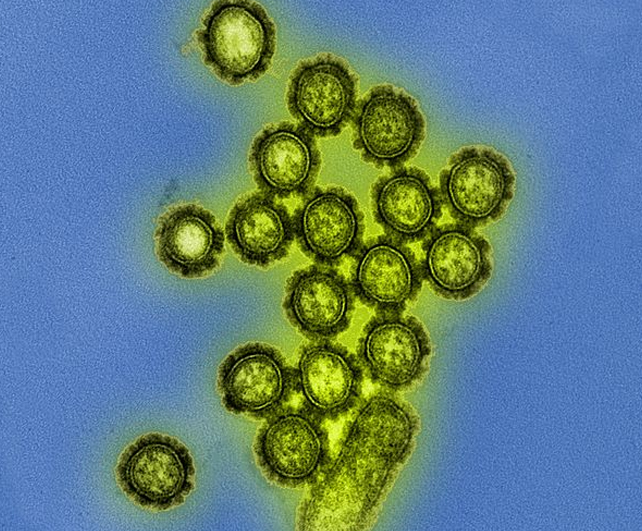Influenza is an infectious disease caused by four closely related species of an RNA-based virus, each commonly spread through droplets and aerosols in exhaled air.
Of the four species of influenza virus (labeled A to D, representing a sole member of four genuses), influenza A is primarily responsible for causing severe illness in humans, with the milder influenza B accounting for up to 25 percent of cases.
Together, the two viruses regularly cause epidemics that infect as many as 5 million individuals around the world each year, resulting in anywhere from 290,000 to 650,000 deaths.
How does influenza spread?
Influenza spreads to new hosts when airborne droplets carrying the virus land on cells displaying a relevant cell receptor, commonly found on mucus-producing tissues inside the nasal cavity and respiratory system.

Droplets are usually produced when an infected person coughs, sneezes, sings or shouts, causing mucus and other fluids lining the airways to take flight. This spray of tiny droplets and mist is mostly concentrated in a radius of a couple of meters (about six feet), where it hangs briefly before falling onto surfaces.
Touching a recently contaminated surface before touching the nose or mouth can also accidentally transfer the virus particles to cause a new infection.
Once inside a cell, the virus disintegrates to release a single strand of RNA coded to act as a template for the host's own messenger RNA. From this, new virus particles can be rapidly generated.
Most of the nasty effects experienced as a result of infection are thought to be a direct result of the body's attempts to fight off the invasion, rather than the consequences of the virus overtaking the cell.
In general, it takes roughly one to four days for symptoms to appear, with infectious numbers of virus particles 'shedding' in droplets from the day before the first symptoms appear, to around a week after.
What are the symptoms of influenza?
Most symptoms of influenza revolve around respiratory discomfort, like a cough, runny nose, sore throat, and whole-body effects, such as fever, joint pain, lethargy, and headaches. Gastrointestinal symptoms, such as nausea, vomiting, and diarrhea, aren't uncommon either.
In general, most symptoms tend to weaken over several days, with some persistent effects – such as a cough – remaining for a week or more.
In a percentage of those infected, especially among the elderly, children aged between six months and five years old, and those with other conditions that compromise their health and immunity, symptoms can worsen. This can include a build-up of fluid in the lungs ( pneumonia), or – less commonly – inflammation of other tissues such as the heart (myocarditis) or brain (encephalitis).
There are treatments that can reduce the symptoms and duration of influenza, including antiviral drugs such as oseltamivir (sold as Tamiflu) and zanamivir (Relenza). In the US, hundreds of thousands people require hospitalization for influenza each year, with as many as 50,000 individuals succumbing to the worst of its symptoms.
Why can't we eradicate influenza?
The first vaccine against influenza was developed in the early 1940s and finally licensed to vaccinate the general public in 1945. Just two years later, researchers realized something was amiss – the virus's chemical identity had shifted, rendering the existing vaccine less effective and forcing them back to the drawing board.
Like many vaccines, the preventative treatment relies on providing the body with forewarning of what prominent markers on the outside of the virus particle looks like, allowing the immune system to get a head start on manufacturing antibodies.
There are multiple subtypes of each genera of influenza virus, and the genes that allow them to latch to other cells mutate easily, making new generations of the virus unrecognizable to our immune systems.

Influenza A doesn't just infect humans, either – it can find a home inside a wide variety of mammals and birds as well. As it moves through a wild population of animals or livestock, it can build up sufficient mutations until it spreads easily through humans.
Researchers are currently working on ways to make flu vaccines last longer by targeting more stable regions on the virus. While it might not see an end to influenza, having a vaccine that works across many strains would go far in saving lives.
All Explainers are determined by fact checkers to be correct and relevant at the time of publishing. Text and images may be altered, removed, or added to as an editorial decision to keep information current.
